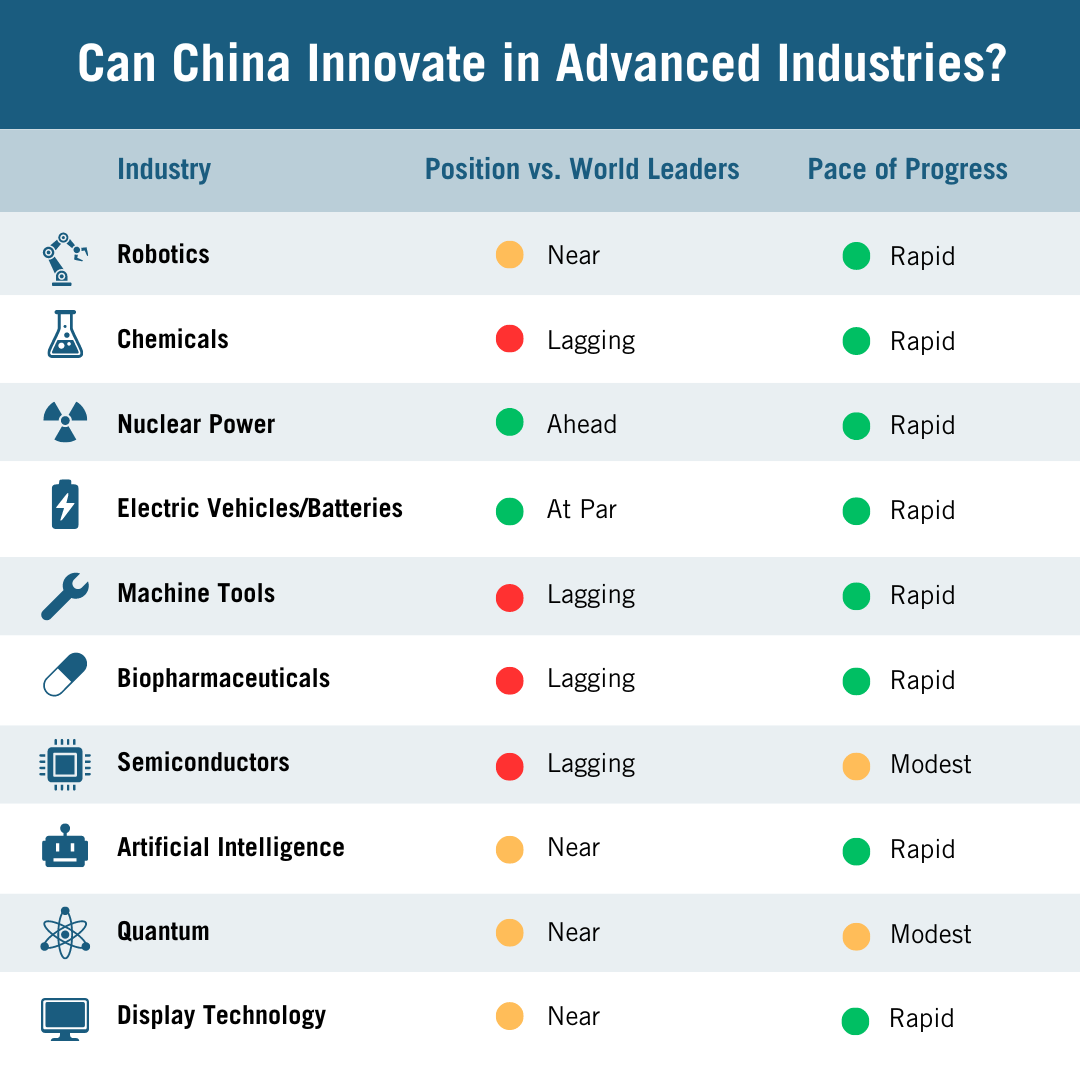Beijingwalker
Elite Member
- Nov 4, 2011
- 76,593
- 104,159
- Country of Origin

- Country of Residence

China Is Rapidly Becoming a Leading Innovator in Advanced Industries, New Report Finds
September 16, 2024WASHINGTON—A 20-month investigation of Chinese innovation capabilities in 10 advanced-technology industries has found that China is at the leading edge of global innovation in two sectors and is not far behind the global leaders in four others. The evidence suggests that China has not yet taken the overall lead, but its firms are making rapid progress in developing their innovation capabilities and will likely equal or surpass the U.S. and other Western leaders within a decade or so, according to a new report by the Information Technology and Innovation Foundation (ITIF), which conducted the investigation.
ITIF investigated China’s innovative capabilities in 10 industries: robotics, chemicals, nuclear power, semiconductors, display technologies, electric vehicles and batteries, artificial intelligence, quantum computing, biopharmaceuticals, and machine tools. ITIF is holding a Capitol Hill briefing event on September 18 to present its findings.
“The prevailing view of China’s economy has long been that it is a production powerhouse, but a mere copier that lacks the scientific and technological ability to develop groundbreaking innovations,” said ITIF President Robert D. Atkinson, who led the research. “But, if China can develop new-to-the-world innovations ahead or on par with the United States and its allies in the West, its potential to displace them and gain a decisive global advantage becomes much more likely.”
Of the industries ITIF assessed, China appears ahead in nuclear power; on par in electric vehicles and batteries; near the lead in robotics, displays, artificial intelligence, and quantum; and lagging in chemicals, machine tools, semiconductors, and biotechnology. Apart from semiconductors, where progress has been somewhat frustrated by export controls on equipment, and quantum, China’s rate of progress is striking.
As outlined in the report, if China succeeds in becoming the world’s innovation leader, the center of global techno-economic power will shift. Among the potential consequences, China would be less vulnerable to Western sanctions and other trade tools, and its military capabilities and influence over developing nations would grow. Meanwhile, the U.S. technology production base would continue to erode, the dollar would devalue significantly, or the U.S. trade deficit would grow.
Figure : Chinese industries’ relative position and pace of progress on indicators of innovation

“China’s economic, trade, and technology policies are all about winning the war for global techno-economic power, and the CCP’s overarching goal is innovation in advanced industries,” said Atkinson. “But few acknowledge that the United States is even competing for advanced industry dominance—or if they do, they think a U.S. victory is inevitable. The Chinese science and technology system has real strengths, and the United States should embrace many of its features.”
ITIF’s analysis details how China has developed a first-of-its-kind innovation system that builds up its own advantages while degrading its competitors in a vicious cycle. To respond, ITIF argues that the United States needs to adopt key elements of the China model and embrace “national power capitalism” premised on the reality of states competing for techno-economic power and investing adequately to win the techno-economic war with China.
ITIF offers the following five key proposals for U.S. policymakers:
- Triple the research and experimentation tax credit. The Chinese R&D credit is at least three times more generous than America’s, while China’s R&D labor costs are less than half. Congress should triple the Alternative Simplified Credit to 42 percent and allow expenditures on global standard setting to qualify.
- Institute a seven-year, 25 percent investment tax credit for all new machinery and capital equipment. America is “capital equipment lite”; China is heavy.
- Establish five national industrial research institutes focused on key industries and technologies, modeled on entities such as Taiwan’s ITRI.
- Establish a “Competitiveness DARPA” to co-invest with industry on research and application of key technologies needed for dual-use national security leadership in the commercial sector.
- Establish a national industrial development bank to provide low-interest patient capital for domestic manufacturing investment.





